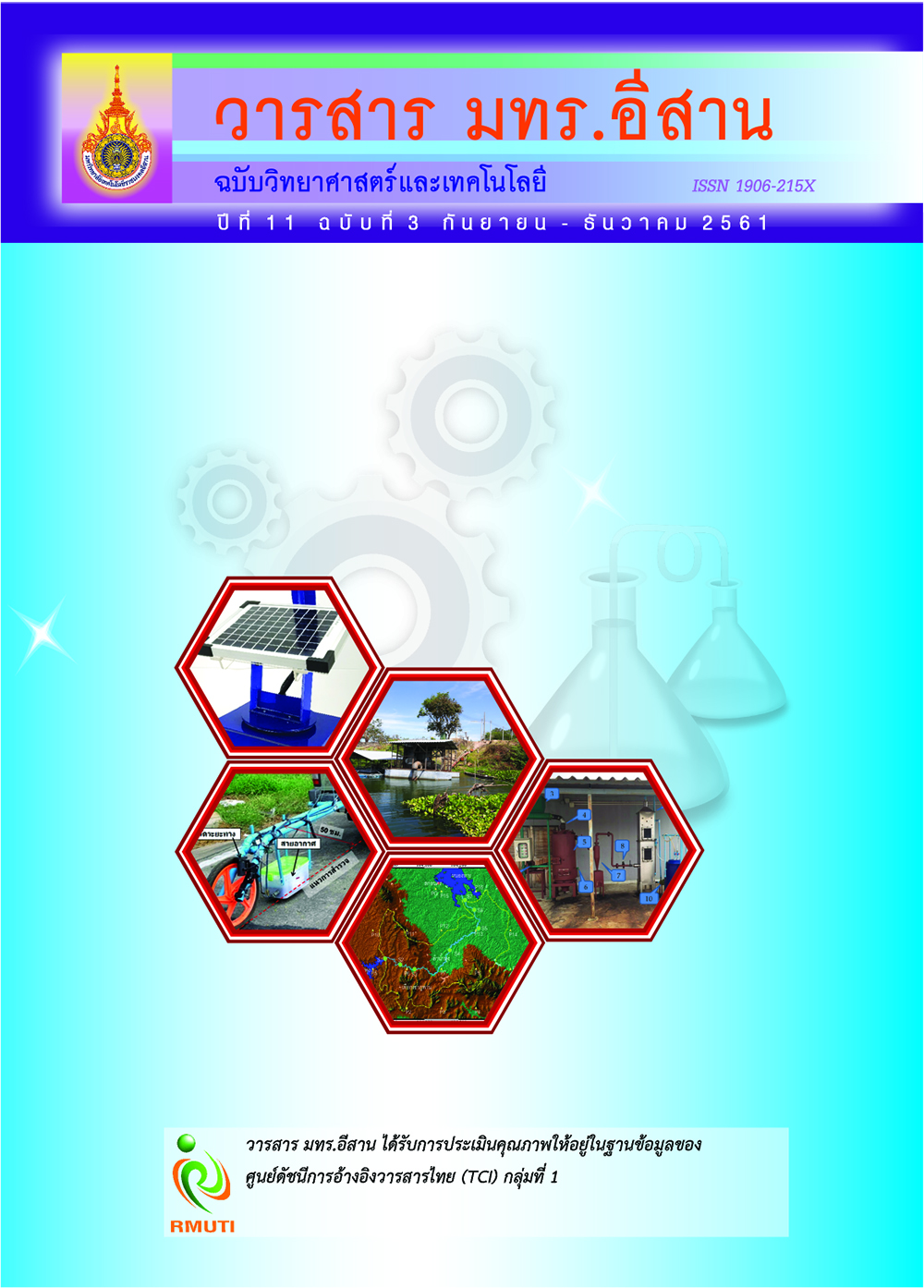Physical Properties of Yok Denim Nakhon Fabric
Main Article Content
Abstract
The objectives of this study were to develop weaving process of yoknakhon fabric with three types of weft indigo dyed yarns and test their physical properties. In the experiment, Completely Randomized Design (CRD) was factor and the following three types of yarns: cotton, polyester, and cotton rayon blend were used in the weaving process development with dokpikul pattern. The testing of the physical properties of the end product was then carried out by means of ASTM and AATCC standard testing. From the development of the weaving style of the city, it was found that the three types of yarn could be used to weave the
denim city cloth. This new style cloth was unique, having Thai art properties with prominent strength. And the production was fast. From the physical properties test, it was found that the polyester yarn had the most tensile strength and yarn evenness of 1104.70 denier, 1.87 gram per denier and 11.20 percent respectively whereas the yok denim nakhon polyester fabric had the maximum tensile strength in weft range length and thickness of 861.49 newton,
424.51 gram per square meter, and 1.60 millimeter respectively. Concerning the test of the yarn number of count in the weft direction, it was found that yok denim nakhon cotton fabric had the largest yarn number of 44 threads per square inch. From the test of weaving tensile strength in warp and weft direction of the three fabrics, it was found that the average strength was more than 125 newton. In relation to color fastness to washing and color staining, the color fade and the color shade of the three fabrics appeared to be at the slight level of 4.5.
Article Details
References
[2] The Faculty of Textile Industry. Rajamangala University of Technology Krungthep. (2012). Textile of Thailand : An intellectual Heritage. Bangkok: A.P. Graphic Design & Printing Co., Ltd.
[3] Choopong, A. (2005). Factors Affecting Jeans Buying Behavior of Consumers in Bangkok Metropolitan Area. Master Degree in Marketing Faculty of Business Administration Srinakharinwirot University
[4] Promjinda, V. (2001). A Study of Consumer Behavior on Jeans in Bangkok Metropolis. Master of Organizational Management and Administration Faculty of Business Administration Dhurakij Pundit University
[5] Khongyai, T. (2011). A Study on Properties of Plain Cotton Woven Fabric After Wash by Front load and Top Washing Machine. Master of Engineering Textile Engineering
Rajamangala University of Technology Thanyaburi
[6] Intertek. (2014). Testing. Access (18 December 2017). Available (https://www.intertek.co.th/testing/)
[7] Teeraprasert, S. (2014). Material Testing. Access (5 December 2017). Available (https://www.textiles.rmutk.ac.th/images/textile_raw_material_control/textile_raw_material_control.pdf)
[8] Hattayananont, A., Soyraya, B., and Theeramongkol, P. (2013). Development of Textile in SLUB Yarn Fabric from Textile Material Waste. Research from Faculty of Home Economics Rajamangala University of Technology Phra Nakhon
[9] Jankedlaed, M. (1998). Basic Science of Textile. Bangkok: The Thai Home Economics Association Under the Royal Patronage of Her Majesty the Queen.
[10] Vonkglam, S. (2010). A Study of Properties of Knitted Fabric Made from Silk and Polyester Twisted Yarn. Master of Engineering Textile Engineering Rajamangala University of Technology Thanyaburi
[11] Sonthisombat, A. (2012). Textile Chemical Processing. Pathum Thani: Faculty of Engineering Rajamangala Institute of Technology.
[12] Chonsakorn, S. (2012). Textile Structure and Accessory Analysis. Access (5 December 2017). Available (https://www.het.rmutt.ac.th/?p=5909)

